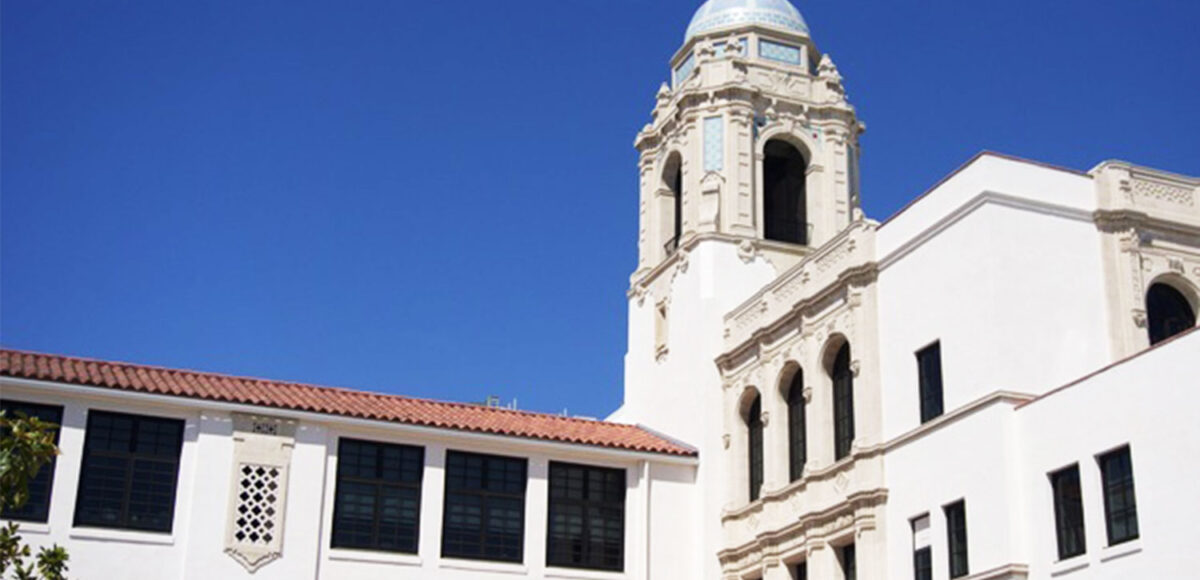Students and teachers are only a few months into the 2024-2025 school year, but the Education Technology Committee has already collected significant data on classroom technology. The committee, which started meeting in August to study the use of technology such as iPads and laptops in classrooms, presented its first report at the Beverly Hills Unified School District (BHUSD) Board of Education meeting on Oct. 22. The presentation included statistics from teachers and students to show how technology has benefited their ability to teach and learn at all grade levels. The report was the first multiple updates as part of the committee’s promise to ensure that classroom technology usage is helpful and necessary.
“Our primary focus always is, ‘How are we integrating technology to make sure that we are aligning with not only our mission but also our vision of being able to have our students realize their full potential and thrive and integrate into a complex and changing world?” said Assistant Superintendent Dr. Dustin Seemann, who led the presentation. The commission comprises 15 BHUSD educators who teach in elementary, middle, and high school, and use technology at varying levels in their classrooms. Multiple committee members attended the meeting on Oct. 22 to present their data.
Since August, the committee has surveyed all school staff, reviewed technology purchases and consulted with the technology department to gather data. They found that the use of instruments such as iPads, laptops and specific individualized learning programs improved students’ performance, especially in STEM classes. In a survey conducted at Beverly Vista Middle School, 66% of students said that technology has been most beneficial for learning in science classes, and 51% said that it has been most beneficial in electives, including aerospace and coding. A study conducted across the district in mathematics found that students who used the program iReady for 30 or more minutes per week outperformed those who did not.
“Seeing how things have grown in the last 10-11 years in this district, in regard to technology, is truly remarkable, and it is one of the things that sets us apart as a district across the country, when you look at how other schools are functioning in relation to technology,” said Jocelyn Bresnick, a kindergarten teacher at El Rodeo Elementary School.
The committee also reminded the board that these programs are not a replacement for teachers, but an extension. Technology is used sparingly in elementary school and is used more often in older grades. A survey conducted at Beverly Hills High School found that 33% of technology is only used between 15 and 30 minutes at a time, whereas iPads are mostly used for individual student evaluations in younger elementary grades. The use of technology in classrooms has been scrutinized in the past by parents and board members, but the district also has a responsibility to keep up with state standards such as the recently enacted Assembly Bill 114. This bill was passed in July 2023 and mandates dyslexia screening for all students enrolled in kindergarten through second grade at California public schools. The law, which went into effect in January, requires that schools screen young students for reading difficulties, including dyslexia, using approved instruments. Local agencies will begin using tools in the 2025-2026 school year to assess students in kindergarten through second grade annually.
During board comment, Board Member Noah Margo defended the use of technology as an extension of classroom learning. “A lot of technology has come through education to facilitate a teacher’s ability to tackle material more quickly and more efficiently,” he said. “When they do that, they can teach better—flat out.” He recalled the transition from abacus to calculator, to scientific calculator, and the transition from magnifying glass to microscope to electron microscope. “All of these things bettered our ability to teach and students’ ability to learn.”
He also addressed parents’ concerns from past meetings that technology can be potentially harmful. “I think social media has villainized technology in some realms,” said Margo. “I think we have to be really cautious and be able to separate for ourselves, for the students, for the parents, that when we talk about technology, we are no—not once in this presentation did we talk about social media, because what we are doing is not that.” His comment was followed by applause from members of the audience.
After his comment, Board Member Judy Manouchehri voiced concerns about the negative effects of screen time, especially in early childhood development. She pointed to the fact that using technology at school adds to the amount of time children already spend on screens at home. However, Board President Dr. Amanda Stern argued that the positive effects of technology outweigh any negative effects of extra screen time. She pointed to the use of virtual 3D models in advanced science classes, adding that such tools make complex topics more digestible for students. “If we want to really focus on academic excellence and we want to attract some of the best talent from graduate schools that train teachers, then I really do suggest that we keep a lid on social media harms and we continue to educate, educate, educate, we continue to make sure that cellphones do not create cyberbullying, depression, body shaming, all those things that we know they do.” She explained that as a psychologist, she has witnessed the harmful effects of social media firsthand, but as an educator, she has also witnessed the positive impacts of classroom technology. “There are tools that, in general, can guide us and align us towards educational excellence with the caveat that we are careful about real problems of social media.”







